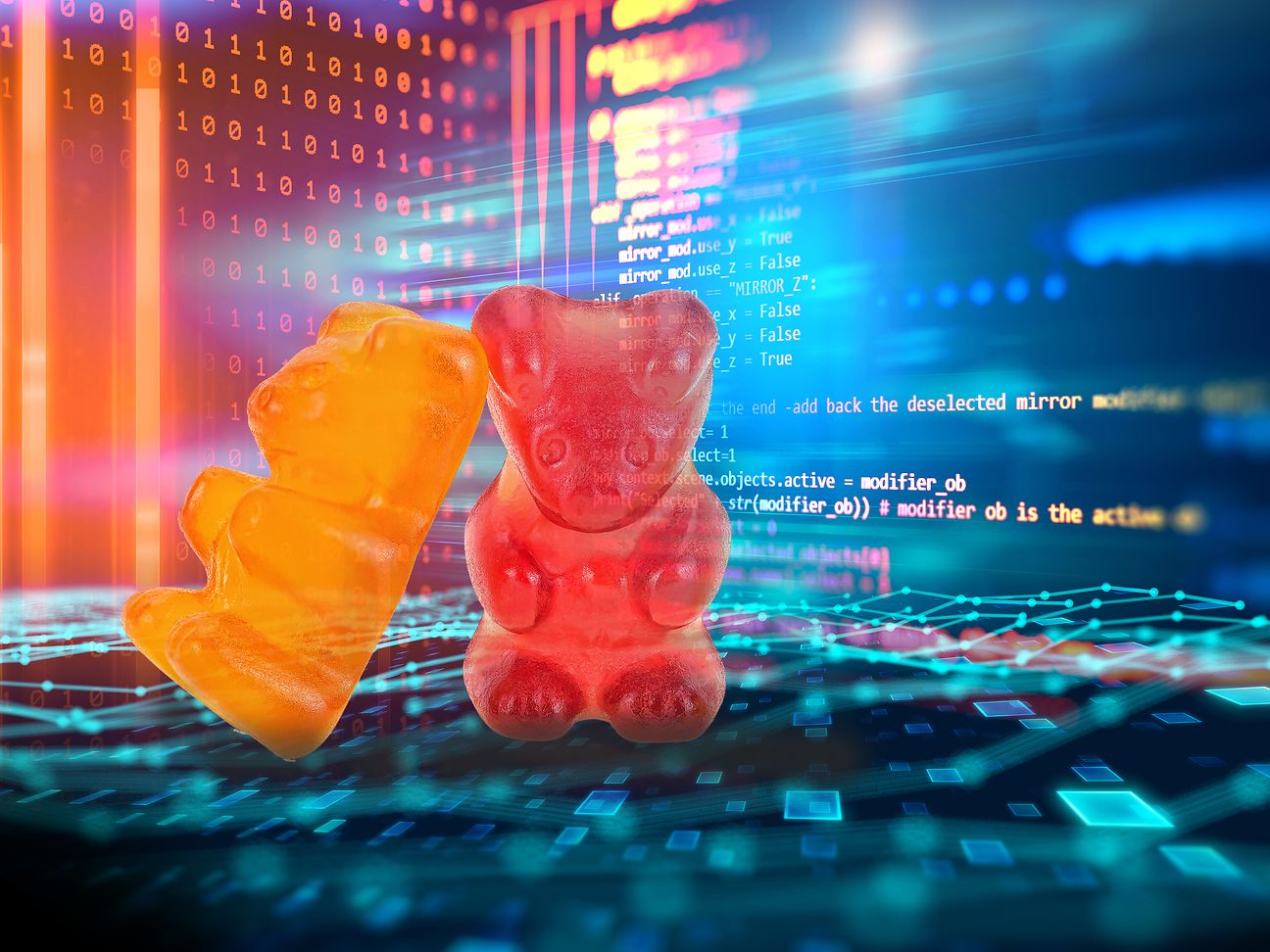What gummy bears have to do with open source
Whether routers or chatbots: more and more development projects are working with open source. It's a give and take with a global community of software experts. But how does it work and what needs to be considered? We explain - using the example of a gummy bear cake.
Imagine you have a great recipe for a gummy bear cake. You share it with your circle of friends. Everyone can now bake the cake. And maybe even improve or change it. For example, they could add raspberries or turn it into muffins. And if they share their changes with others, everyone can benefit. The result: lots of delicious pastry variations with gummy bears. It's a bit like open source.
Open source means that the "source code" of software - that's the recipe in our example - is publicly accessible and can be viewed, used, modified and redistributed by anyone. And just like with gummy bears, everyone can benefit from the improvements and changes that other people make.
Don't keep reinventing the wheel (or recipe 😉)
Let's say you want to develop a chatbot: an AI (artificial intelligence) that can chat with people in natural language. You could start from scratch and program everything yourself. But that would be like trying to bake a cake without knowing what ingredients you need or how long it needs to stay in the oven.
Instead, you could find an open source project for a chatbot and use its code as a starting point. You could see how other people have solved the problem and learn from their work. You could take their code and modify it to create your own unique chatbot. And if you want, you could share your improvements with the community so that others can benefit from them too.
Licenses regulate the interaction
So it's a give and take. It's not about money as a currency. It's about action - for example, always naming the authors, even of changes. Rights and licenses regulate the interaction. Because: Imagine someone takes your cake recipe and sells the cakes without saying that the recipe is yours. That wouldn't be fair, would it?
With open source, licenses define what other people are allowed to do with the code and what they have to do in return. All licenses allow others to use and redistribute the code. Two examples using the gummy bear cake recipe show how different they can still be:
- Anyone who extends your recipe (i.e. creates new source code) publishes their new license with terms of use at the same time. However, you could also stipulate from the outset that the new, modified recipe (i.e. the new source code) is only published under the same original license. This prevents new versions from being given usage limits that did not exist in your original. Everything remains open. An example from the software world is the Linux operating system.
- In the same way, you could use a license to specify that the recipes of entire menus are shared - even if someone only includes your gummy bear cake as a dessert.
In short: open source licenses grant rights of use, but also demand services in return. Anyone participating in an open source project should therefore understand the respective license before using the source code. If you start such a project yourself and others contribute to it, these contributors also have rights to the changes they have made. They also have the right to look at your preliminary work for years to come.
In summary, open source means that anyone can see, use, change and share the code of a software. It makes it possible to learn from each other and create better software together. And as with photos, texts or even recipes, it is important to respect the rules and the rights of others. Then the results can be enjoyed without any worries.
The text was created with AI support and revised by experts of Deutsche Telekom.



